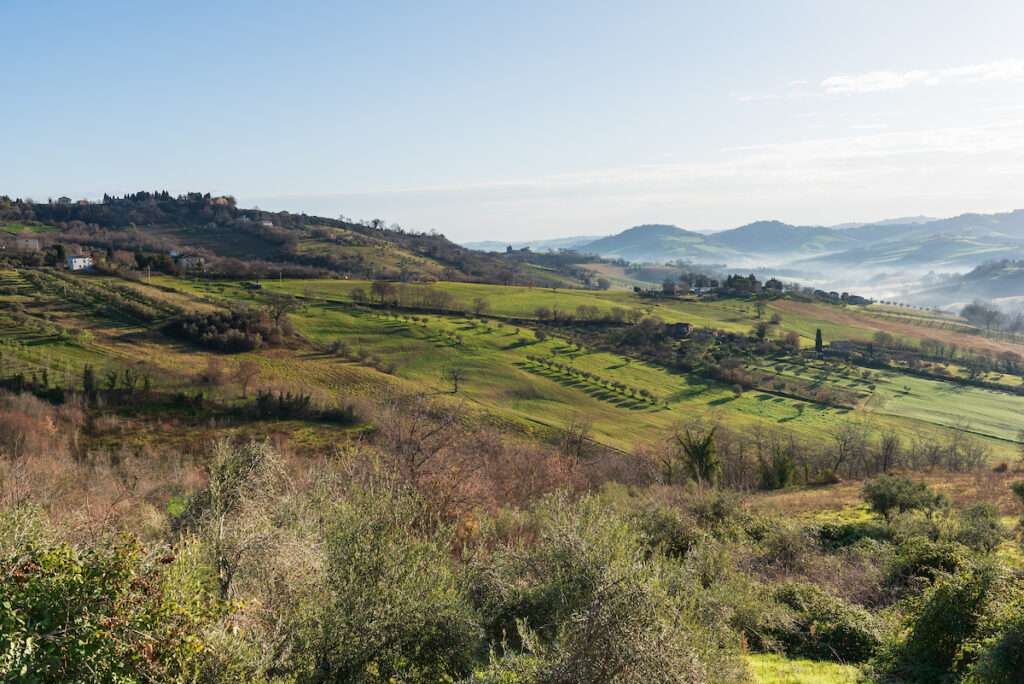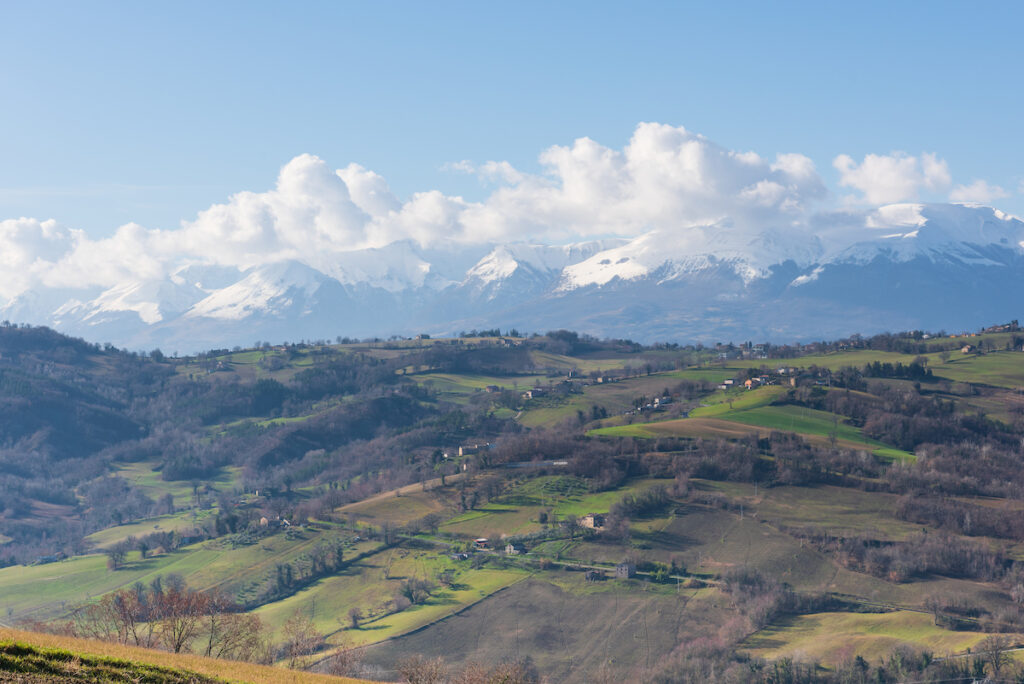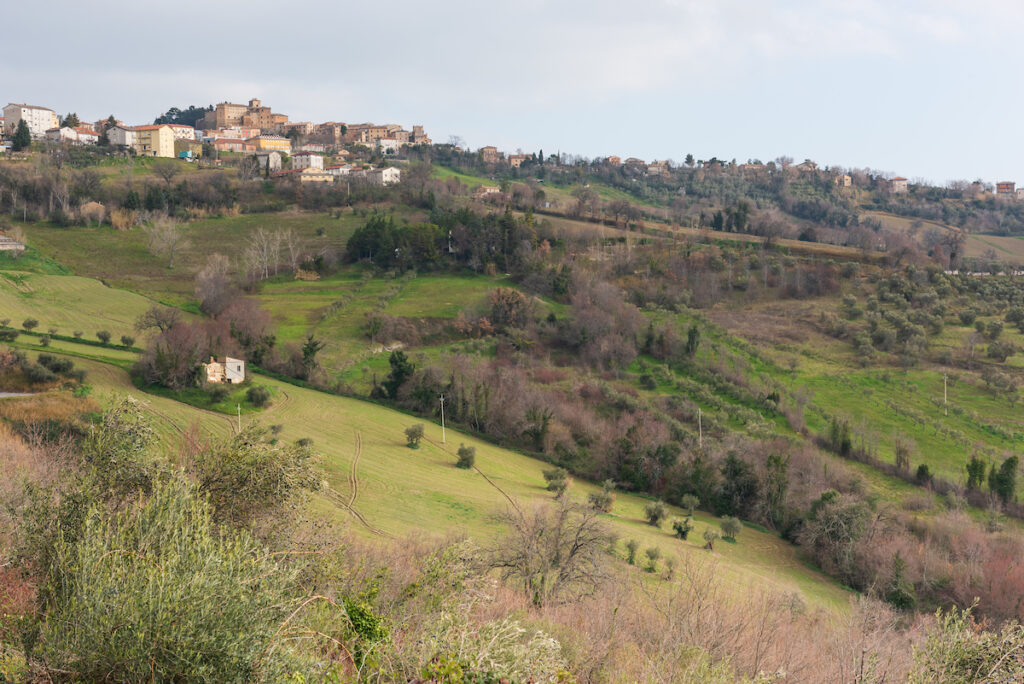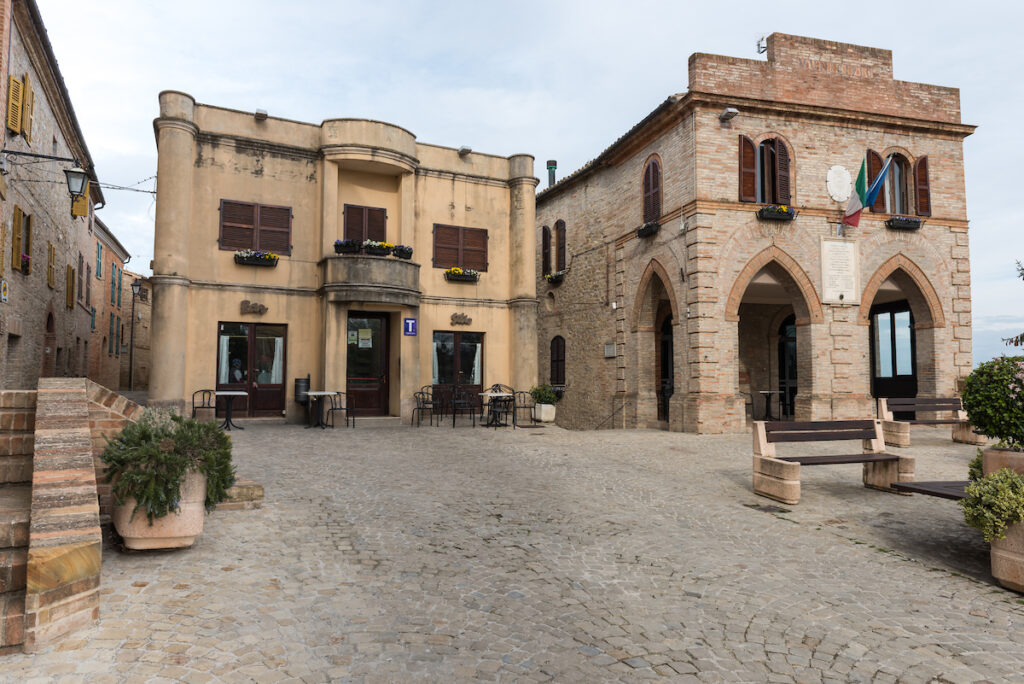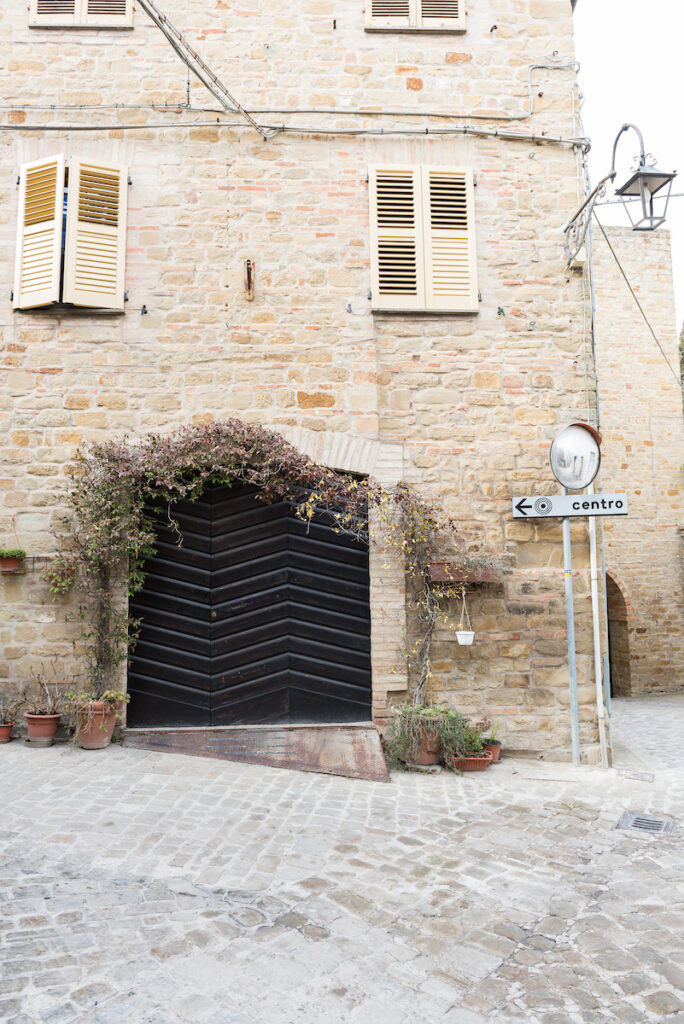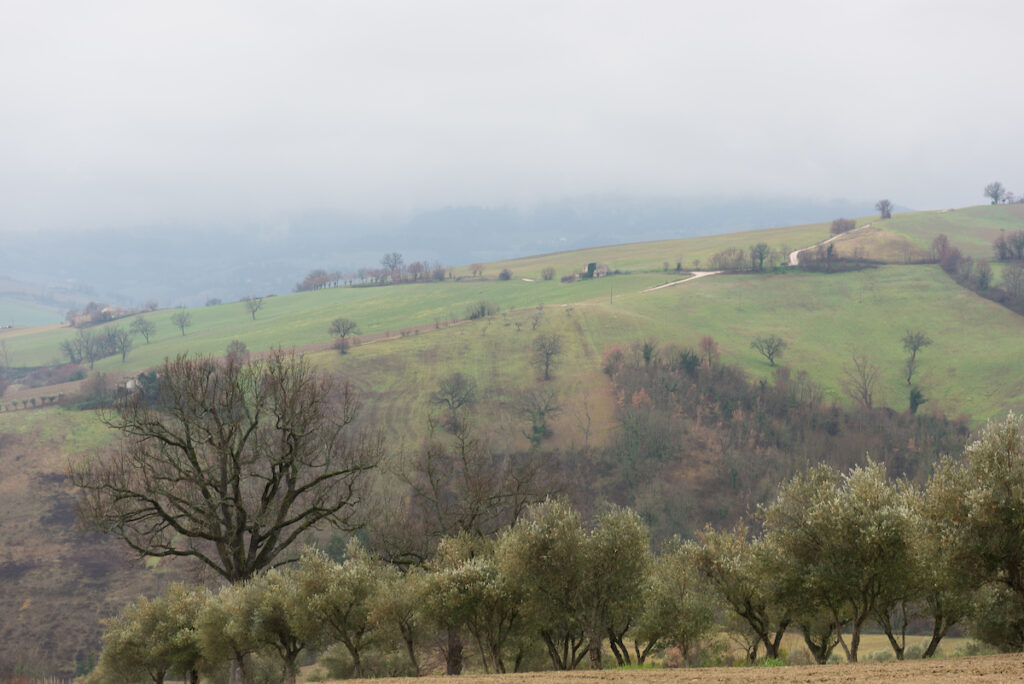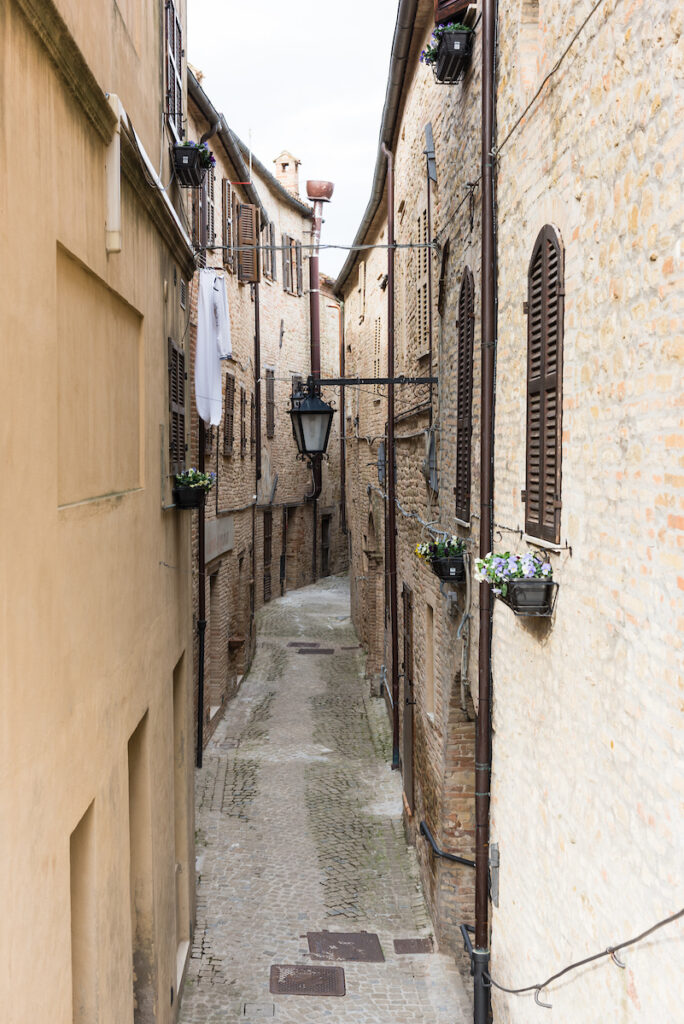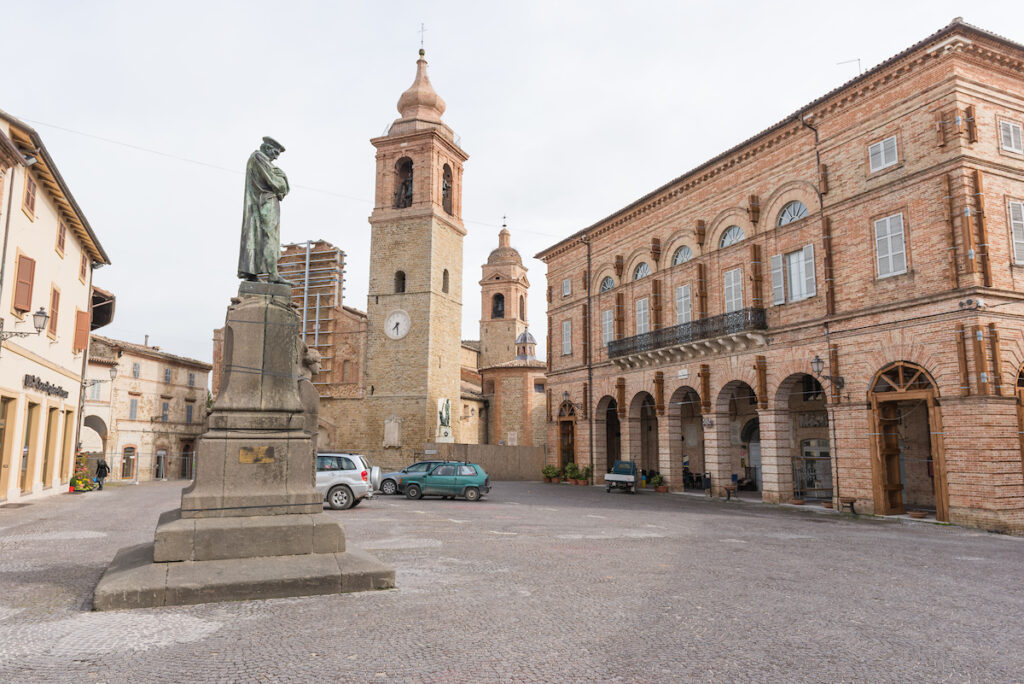
San Ginesio is a fortified hilltop town and is named one of the borghi più belli d’Italia, (the most beautiful villages in Italy). At the bar in the piazza there, my husband Matt ordered us sandwiches and wine for lunch. I was emailing our real estate agent Kevin our offer to buy the house that we had traveled to see. We had left him less than fifteen minutes prior at the main city gate.
Kevin had told us that San Ginesio was hit hard by the earthquakes that struck the region in the fall of 2016. The clock on the tall tower in San Ginesio’s piazza was stuck at 7:29. The Collegiata church, a treasure of the city since 1098, was braced with steel bars and fenced-off, closed for repairs. It is said that Charlemagne’s parents, King Pipin the Short and his wife Bertrada are entombed just inside the entrance.
The florist across the church was open. Flowers and plants spilled out into the walkway, a display of undaunted beauty. The heat of the February sun was an antidote to the cold.
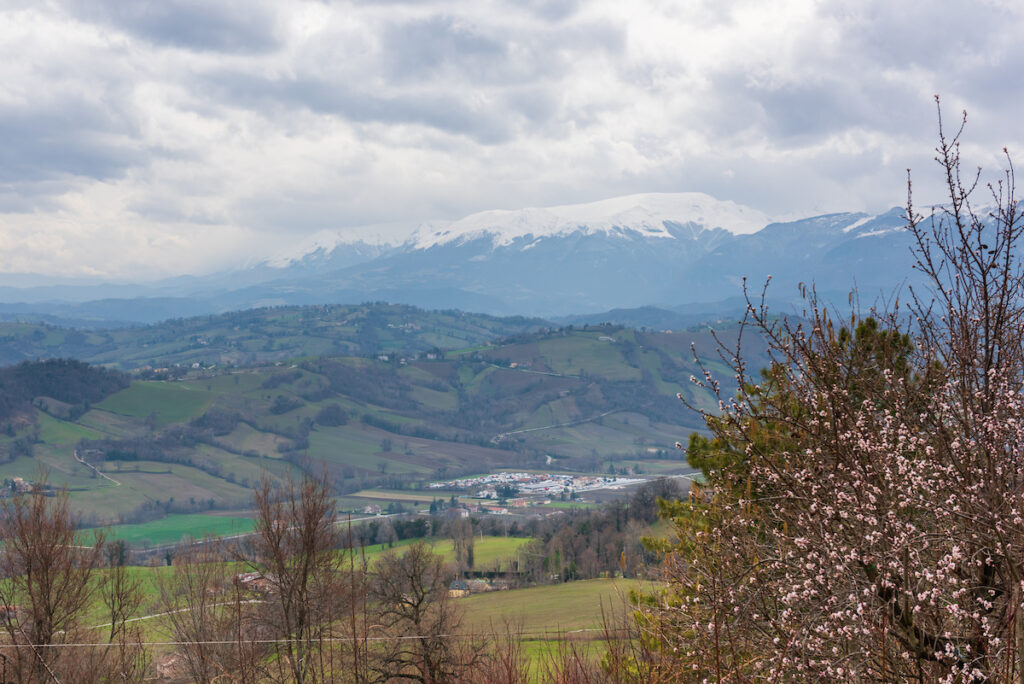
Part of its accessible charm, Le Marche has no large cities. Its many cultural, historical, gastronomical, and natural gems are spread throughout the region, scattered like Carnevale confetti. Ancona, the Adriatic port transportation center and capital of the region tops population lists with about 100,000 inhabitants. Yet only one in four of all municipalities in Le Marche have more than 5,000 residents.
You might think that all of these beautiful-medieval-walled-hilltop towns look alike. That they are nondescript, that they would blur into each other after seeing maybe, two. You might think they are tourist traps filled with souvenir shops. That they are contrived for our visiting benefit. You would be mistaken.
Not far from San Ginesio (pop. 1500), the ‘balcony of the Sibillini Mountains,’ with its enviable views, is Ripe San Ginesio (pop. 800). A jewel box of a village with public sculptures displayed everywhere. It even has a huge chessboard with tiered seating and panoramic vistas over the valley, should your attention wander from the match.
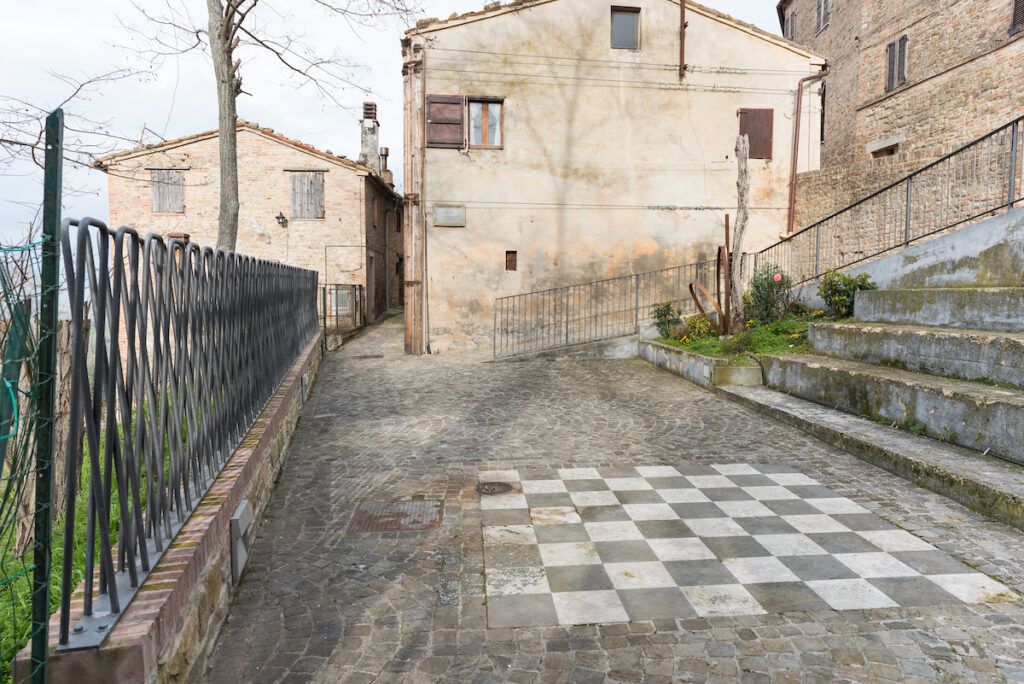
Amandola (pop. 3500), to the south and west, another gateway to the Sibillini, is a labyrinth of narrow zig-zags up a steep hill. Through the city gate barely wide enough for a Fiat 500, the lovely piazza is above a church reached by descending steps. Too cold to try the local gelato, at a gourmet shop just inside the city gate we sampled, then bought, local cheeses (one aged in a cave), truffles (a local speciality), and wines (at bargain prices).
The Marchigiani themselves voted the Piazza del Popolo in Ascoli Piceno as the most beautiful of the piazze in Le Marche. With 49,200 residents, Ascoli Piceno is the fourth-largest city in the Marche, but retains a small-town feel. Two football (soccer) nets stood on opposite ends of the large piazza and children were playing. Decorations hung overhead to celebrate the upcoming Carnevale. Made of shimmering travertine, the piazza is fronted by a church, cloisters, and Caffè Meletti, justifiably famous for its anise liquor made on site (really good in coffee). Every August, Ascoli Piceno holds a medieval reenactment festival and a jousting tournament in the piazza.
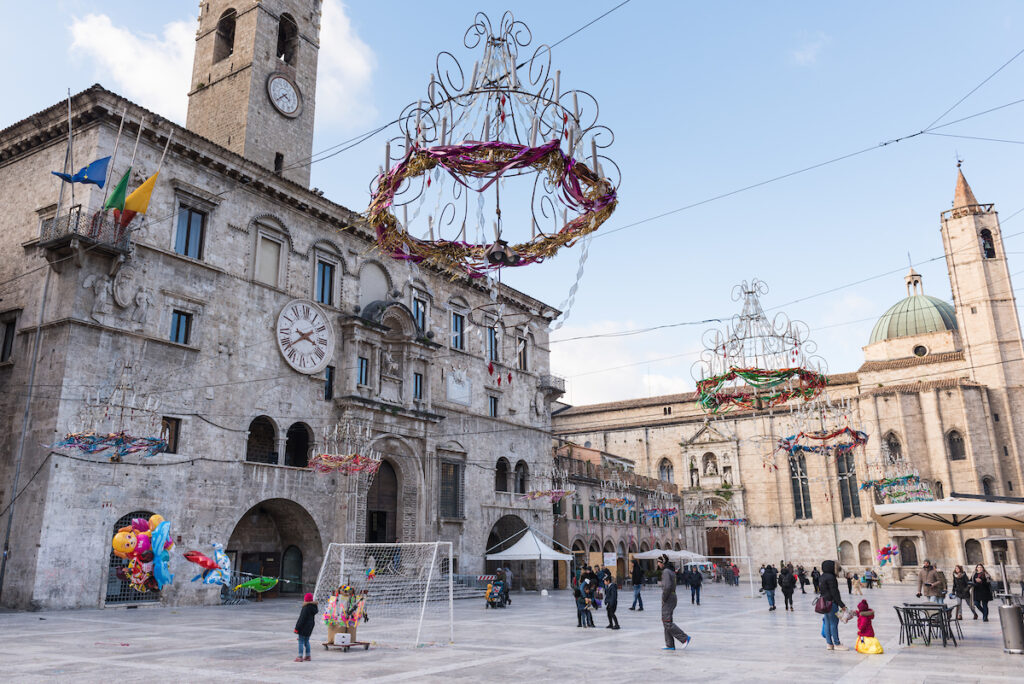
Tolentino (pop. 20,000), along the Chienti River, was a settlement of the Picenes who came to Le Marche in the early Iron Age (ninth-century BC) after being guided here by a woodpecker (picus in Latin). Accessed by a 13thcentury, one-lane bridge (yes it’s scary) called Ponte del Diavolo (Devil’s bridge), Tolentino is a town with intact fortifications, a continuing heritage of pilgrimage visitors, and a thriving leather making industry.
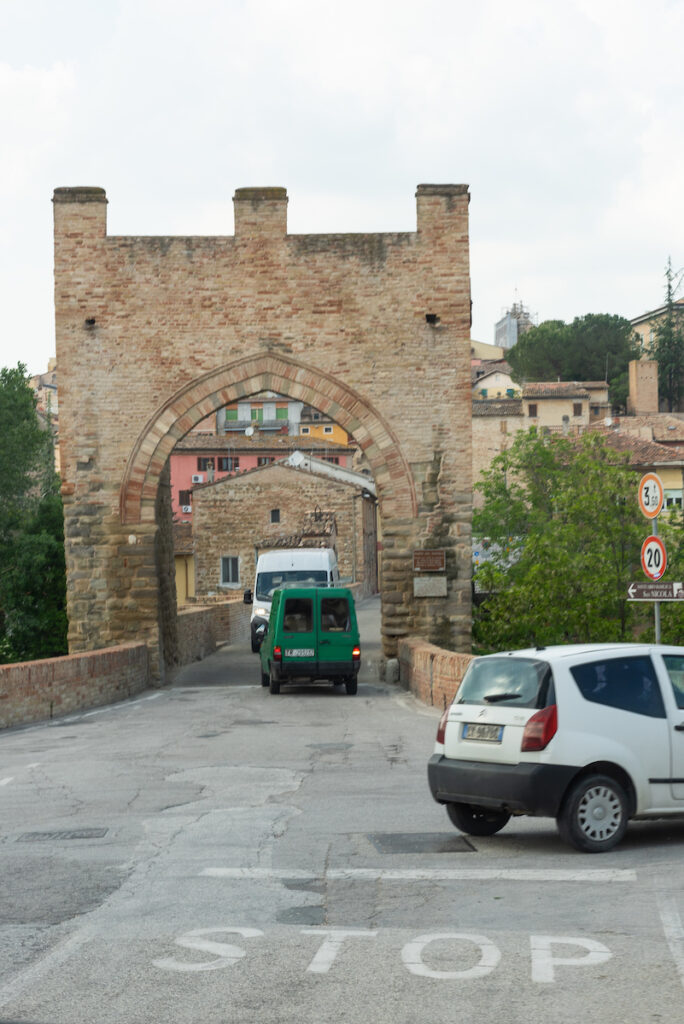
Tolentino’s clock tower is worth driving over the bridge for.On the north side of Piazza Libertà, the 16thcentury bell tower of the church of San Francesco has five elements. The top circle indicates the moon phase, the second shows the hours for prayers, the third gives the time, the fourth the day and the month, and barely visible at the bottom is a solar meridian line.
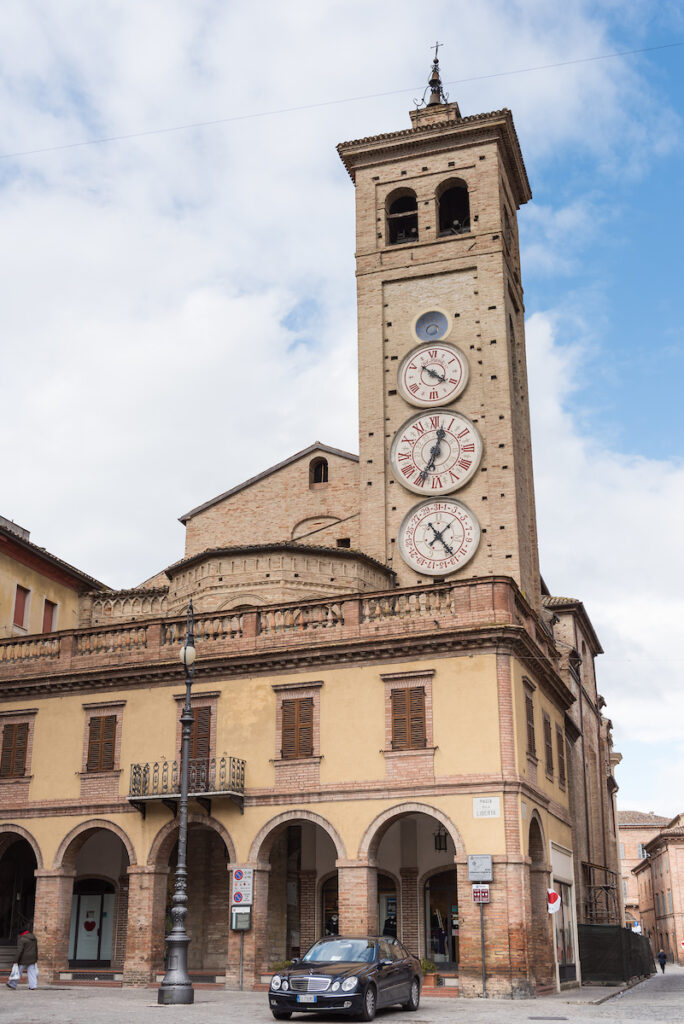
Loro Piceno (pop. 2400) is perched on a hill and dominated by a Norman castle with a large shaded park. Loro, as it is commonly referred to, is known for its Vin Cotto, cooked wine, made by heating it to concentrate the flavor and is often served for dessert. (Or with dessert, it’s that good, and no one will judge you.)
We returned to San Ginesio three months later, in May. We had closed on the house and went to the weekly market there. Our bag of potatoes, onions, and peppers was only €0.80. Matt brought our haul down to the car and we walked up to the piazza, to where it all started. The church was still boarded up behind the chain-link fence. But this time, the clock accurately displayed 12:35.

